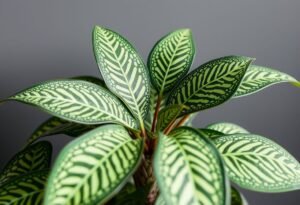Soil Conditions and Hydrangeas: What to Avoid
To flourish, hydrangeas need well-draining soil. Hydrangeas dislike heavy, clay soils that trap water, leading to root rot. Similarly, soil with a high lime content can be detrimental. A mix of peat, compost, and organic matter provides the necessary nutrients for healthy growth. Hence, avoiding hard or alkaline soil will maximize the potential of your hydrangeas.
Light Exposure: Perfect Balance for Hydrangeas
Hydrangeas thrive in partial shade. Hydrangeas don’t do well in full sun, which can lead to scorched leaves and wilting blooms. Conversely, too much shade can restrict their growth. The ideal location is one that offers morning sun and afternoon shade, ensuring they remain hydrated and healthy.
Watering Hydrangeas: Common Pitfalls
While hydrangeas require consistent watering, they do not tolerate excessive water. It’s a common misconception that they should be watered daily; in fact, frequent shallow watering can drown their roots. Instead, water deeply but less often, monitoring soil moisture to ensure they get just the right amount.
Fertilization: What Hydrangeas Should Avoid
Hydrangeas benefit from fertilization, but too much fertilizer, especially nitrogen, can hinder their growth and flowering quality. Incorrect feeding can result in lush greenery at the expense of blooms. Use fertilizers specifically formulated for hydrangeas, according to package directions for the best results.
Pests and Diseases: Protecting Your Hydrangeas
Like every plant, hydrangeas are susceptible to pests and diseases. Hydrangeas dislike humidity, which fosters mold and mildew growth. Regular checks and proper maintenance can help prevent problems from arising. If you notice any troubling signs, act quickly with appropriate pest control methods.
Transplanting Hydrangeas: Best Practices
When transplanting hydrangeas, it’s essential to avoid planting them too deeply. This rule applies to all plants. If planted too deep, roots may struggle to develop, negatively impacting the entire plant. Maintain the same depth as when they were previously planted for best results.
Climate Considerations for Hydrangeas
Hydrangeas are sensitive to climate variations. Hydrangeas dislike freezing temperatures and intense heat. For winter, protect them with burlap or mulch. In warmer climates, ensure they receive adequate water to prevent drought stress. Understanding your hydrangeas and their needs will help them thrive in extreme conditions.
Conclusion: Nurturing Hydrangeas in Your Garden
To ensure vibrant blooms in your garden, it’s crucial to know what hydrangeas dislike. Avoid poor soil conditions, improper watering, excessive fertilizers, and unsuitable light. Create the perfect conditions for your hydrangeas to thrive, allowing their beauty to shine in your landscape.
Disclaimer
This article is for informational purposes only and is not a substitute for expert gardening advice.

















